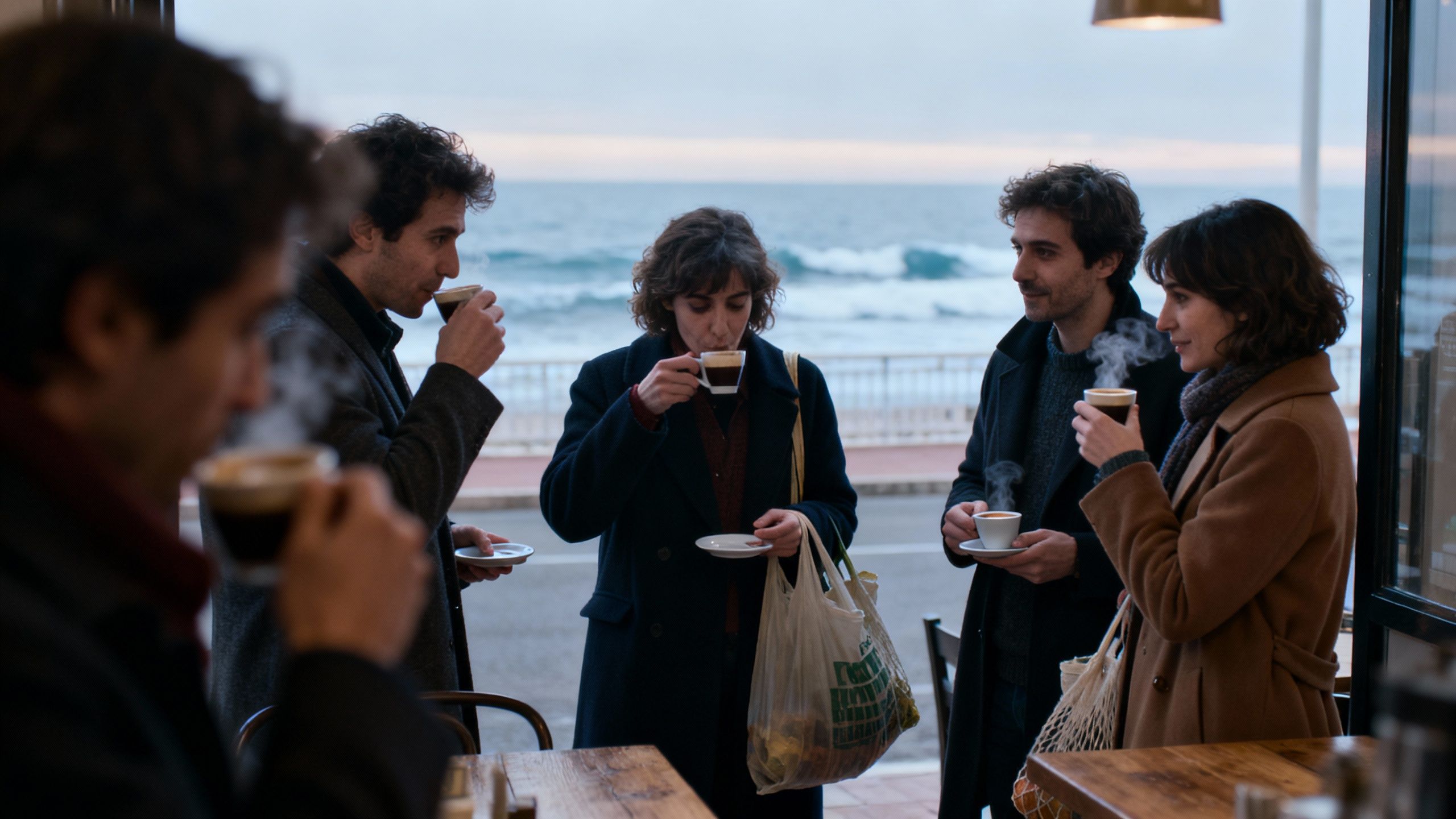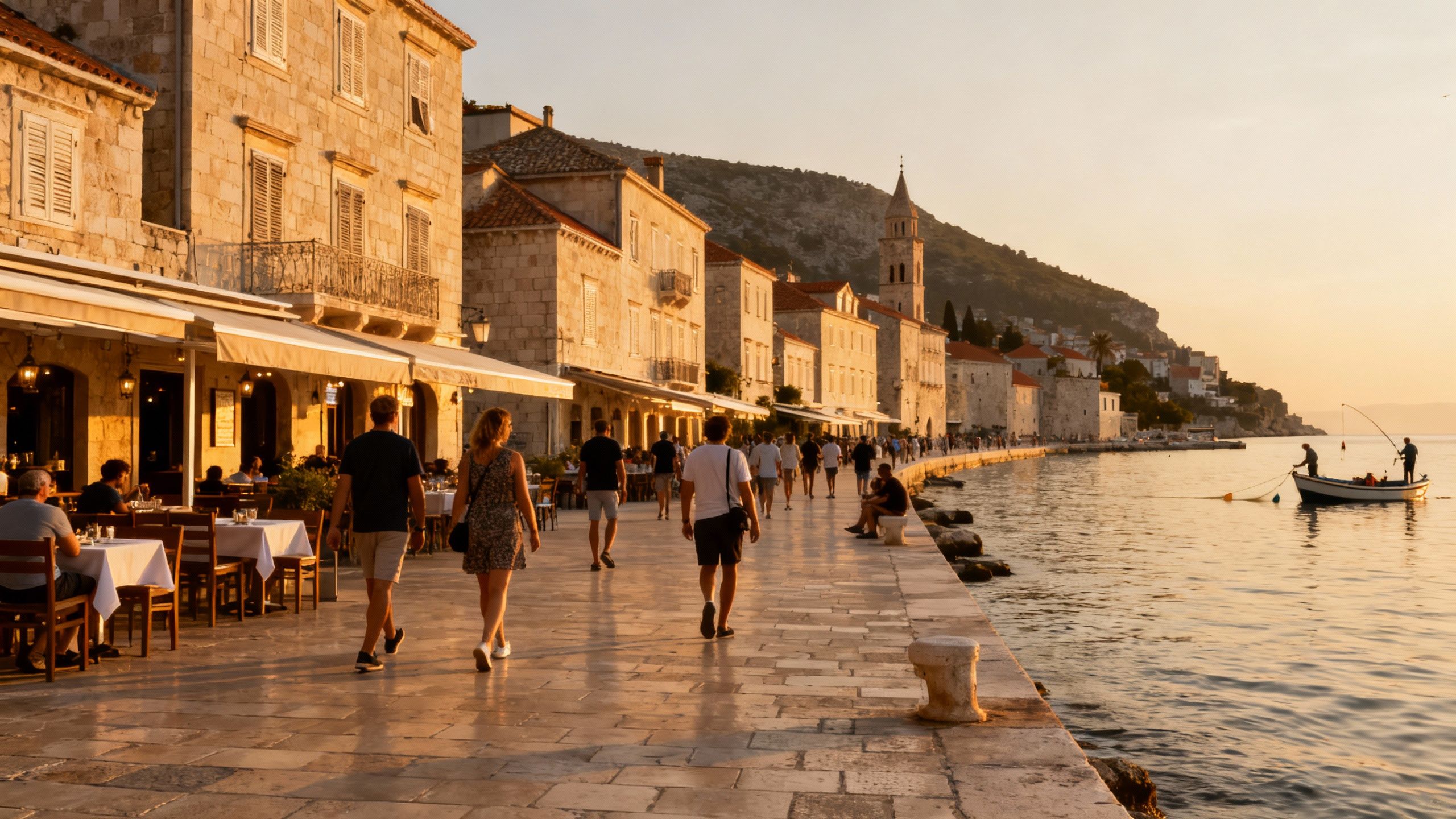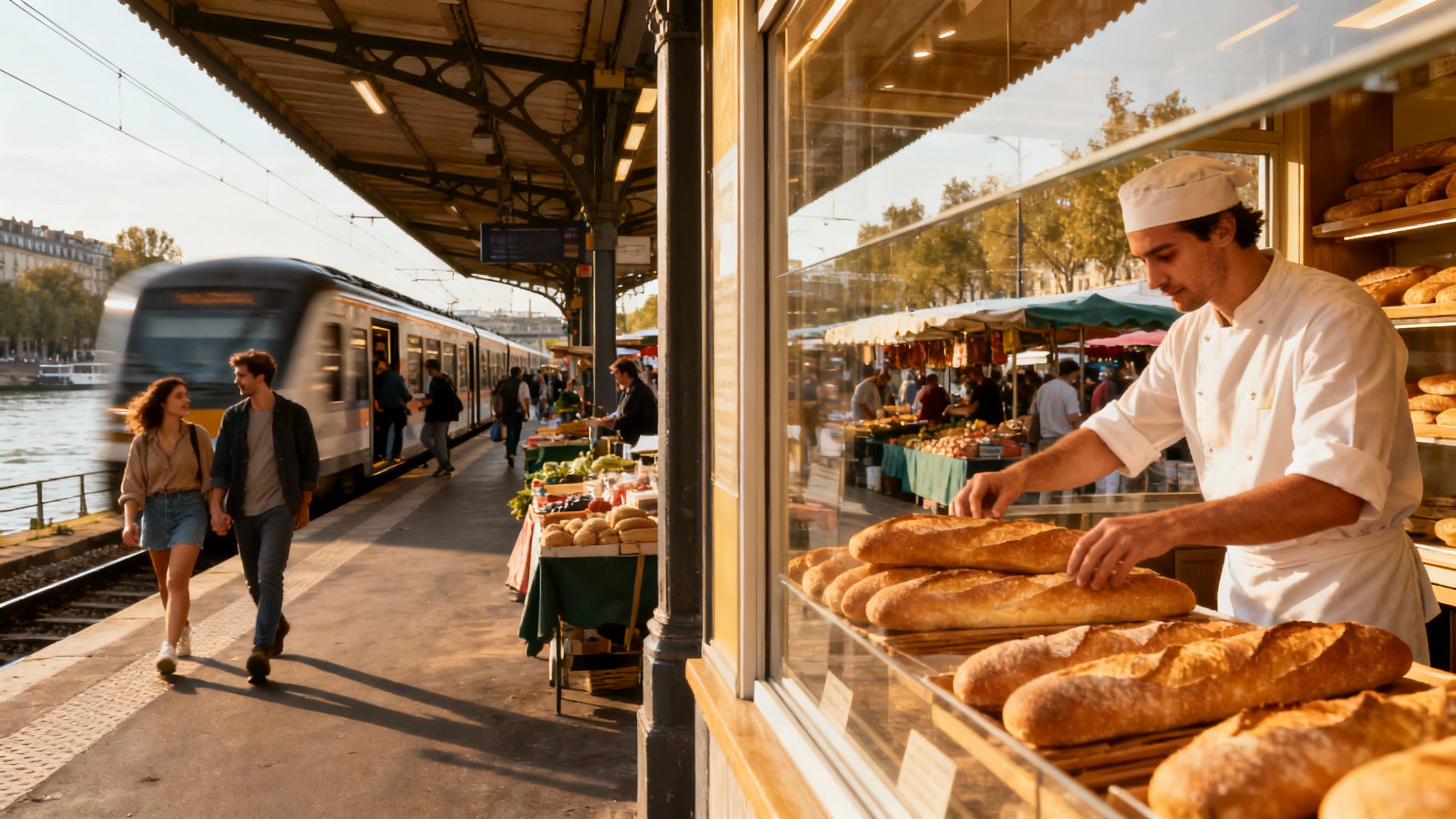The Riviera Myth: Where Coastal France Offers Real Value
Coastal France rewards lifestyle buyers who prioritise neighbourhood rhythms over headlines; national data shows stabilising prices, but local rules and seasonal realities decide value.
Imagine stepping out at dawn to buy tangy tomatoes at Cours Saleya, then crossing to a café on Rue Droite for an espresso while fishermen mend nets on the Quai. Coastal France is a series of lived moments — seaside promenades in Menton, surf mornings in Hossegor, aperitifs on Nice’s pebbled shore — not a single headline about prices. For international buyers this means weighing weather, rhythms and small neighbourhood rules as much as square metres. The good news: recent official data shows national prices stabilising and regional rebounds, so the lifestyle you crave can come with measured market opportunity (see Notaires‑INSEE Q1 2025).
Living the coastal French life
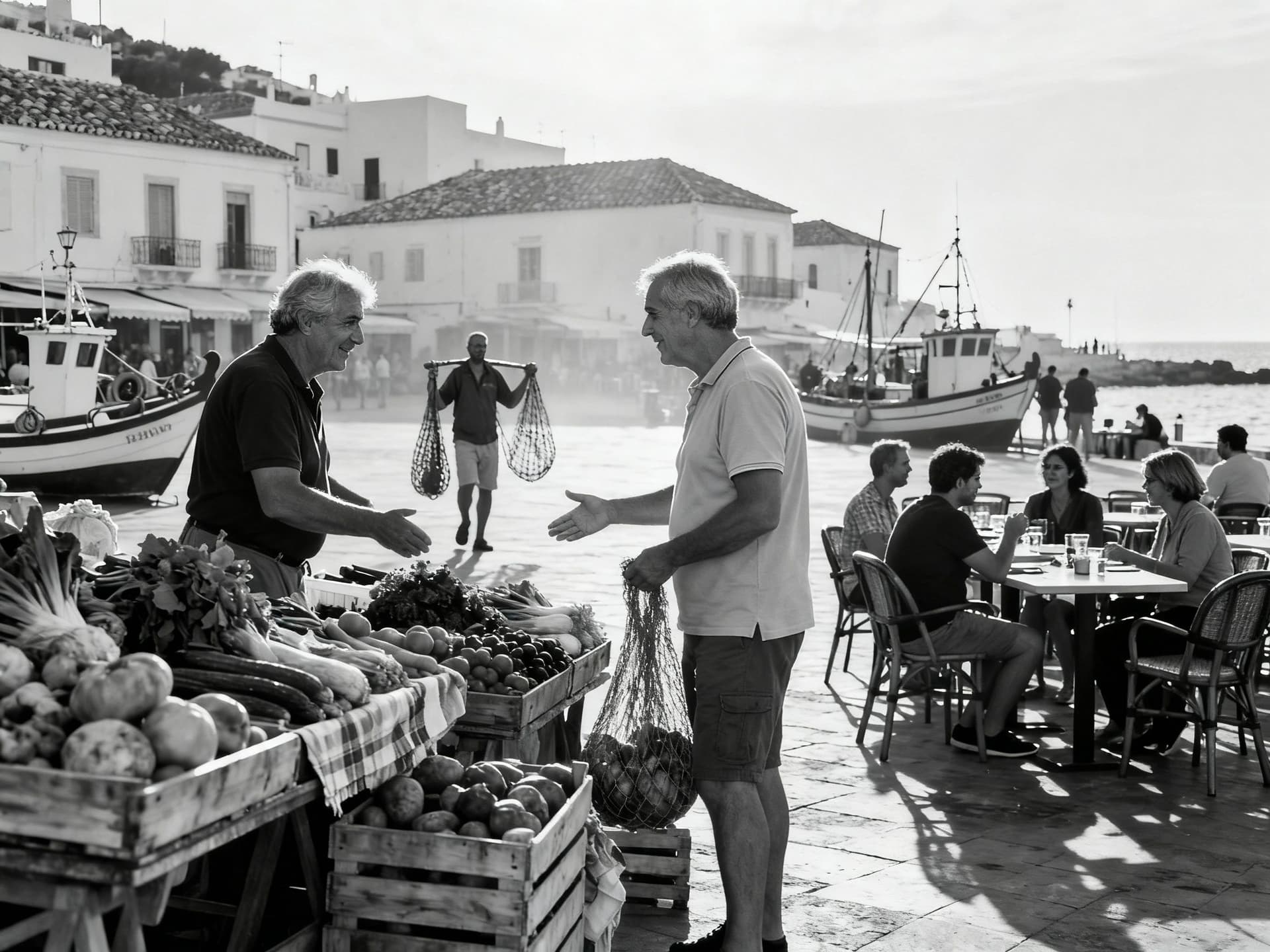
Coastal France is stitched from micro‑cultures. The Riviera’s polished promenades sit beside fishing ports where daily routines still govern market days. From Arcachon’s oyster stands to Saint‑Malo’s tidal drama, seasons shape how you live. National statistics confirm a return to price growth after a period of stability, but the local picture is what matters most: pockets of demand near amenities and transport outperform headline averages (see INSEE Q4 2024).
Nice, Antibes & the Cours Saleya heartbeat
In Nice, mornings belong to markets and tram commuters; evenings to bar terraces on Rue Bonaparte. Antibes’ Vieil Antibes gives a quieter rhythm — narrow streets, boulangeries, and a marina that orders daily life. In both places you pay for walkability to markets and coastal cafes; those conveniences explain price resilience more than glamour alone. Expect smaller apartments near the Promenade des Anglais to command premiums for lifestyle, while short walks inland often deliver material savings.
Southwest surf towns: Biarritz, Hossegor, Cap Ferret
Biarritz and Hossegor feel different from the Riviera: weekends pivot on surf, oyster lunches and quieter high season peaks. Cap Ferret’s slow, family‑run atmosphere rewards buyers seeking community rather than flash. Local supply is constrained by planning rules and protected dune/coastal zones, which supports values but also limits new inventory. For lifestyle buyers the trade‑off is straightforward: authentic coastal life versus rapid resale liquidity.
- Lifestyle highlights: markets, beaches and micro‑neighbourhoods
- Cours Saleya (Nice) morning market — walkable apartments and boulangeries nearby.
- Port of Antibes — marina life, small restaurants, higher service costs but strong community.
- Hossegor’s La Centrale beach — seasonal rental demand and protected building zones.
Making the move: lifestyle meets transactions
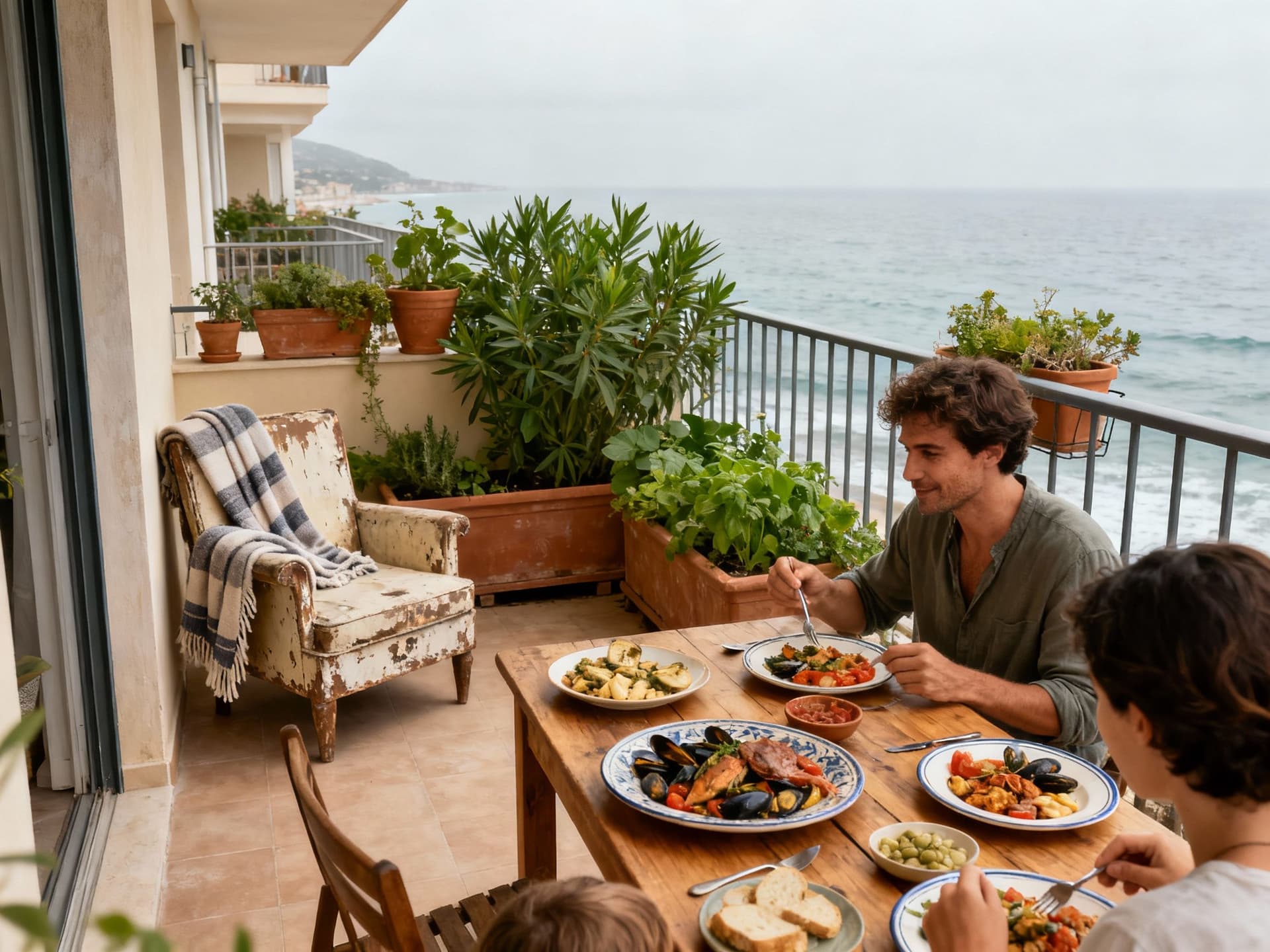
You don’t buy a life at a postcode level; you buy it at an address. That means assessing noise, shade, daily routes to shops, and where neighbours actually park. Practically, coastal French transactions reward local knowledge: which arrondissements enforce short‑term rental limits, where coastal building restrictions reduce supply, and which communes offer stronger resale performance. Reliable data and a local agent who spends Sundays in the market are the two tools that turn a romantic visit into a durable purchase.
Property types that match coastal life
Think terrace apartments for village life, seafront flats for daily promenades, and renovated stone houses for long‑term family bases. New builds on the outskirts offer easier maintenance but less character; town centre flats deliver immediate social life but often require compromise on space. If you plan to rent seasonally, proximity to transport and beaches matters more than a luxury finish.
Why a local agency matters (beyond listings)
- Work with a local agent who understands municipal rules, seasonal rhythms and actual running costs. They should do more than show homes: introduce you to neighbours, point out market‑day traffic, and explain communal charges. Good agents have relationships with notaires, local trades and property managers — the network that turns a purchase into a living reality.
- Check short‑term rental rules at commune level — fines for unauthorised lets are real and affect returns.
- Assess flood and coastal‑erosion maps before assuming a sea view equals safe value.
Insider knowledge: what expats wish they'd known
Expat experience there often follows the same arc: rapture, friction, then accommodation. Rapture is Sunday markets and beach evenings. Friction is bureaucracy, municipal quirks and the real cost of maintenance on older stone properties. Accommodation is learning which neighbourhoods accept you and how to take part in rhythms rather than attempting to remake them. Knowing this path saves time and money.
Language, community and slow integration
French coastal towns reward effort: a few phrases, regular market appearances, and respect for opening hours go a long way. Community life often centres on local associations, pétanque clubs or school events. Expect social integration to be incremental; the most successful expatriates become regulars at a single café and learn how local decisions get made.
Long‑term view: value and seasonal reality
National indices show modest recovery in 2025, but local returns hinge on micro‑factors: planning restrictions, tourism cycles and accessibility. Buying for year‑round life rather than holiday weeks reduces risk. If you plan to hold for a decade, coastal France combines durable demand with predictable seasonality — provided you respect local rules and build maintenance realities into your budget.
- Practical red flags to check before you sign
- Communal charges and recent maintenance history — seaside buildings often need more frequent works.
- Short‑term rental authorisations and potential local restrictions.
- Easements, coastal setback rules and any flood/coastal‑erosion designations.
- Step‑by‑step for a lifestyle‑led purchase
- 1. Visit outside high season — see daily life, not peak theatre.
- 2. Ask your agent for recent copro minutes and service charge schedules.
- 3. Commission local surveyors for coastal exposure and structural checks.
- 4. Plan maintenance budgets and meet nearby property managers before committing.
Conclusion: Fall for the life, buy with local facts. Coastal France is less a monolith of luxury and more a mosaic of daily pleasures and municipal rules. Use national data to set context, then let neighbourhood realities — market days, building condition, and community life — determine where you invest. An agent who knows the cafe owners, the notaire and the mairie is not a luxury; they are the practical route to living the life you imagined.
Swedish expat who moved from Stockholm to Marbella in 2018. Specializes in cross-border legal navigation and residency considerations for Scandinavian buyers.
